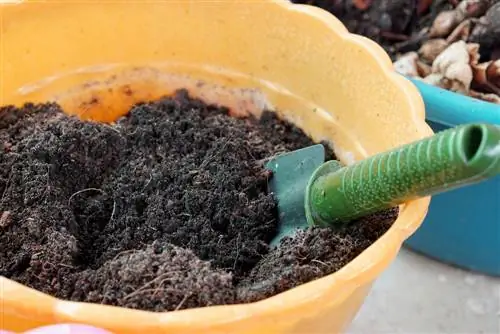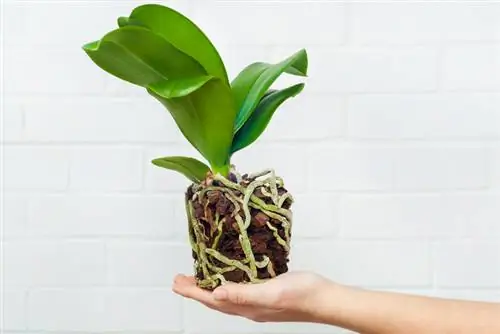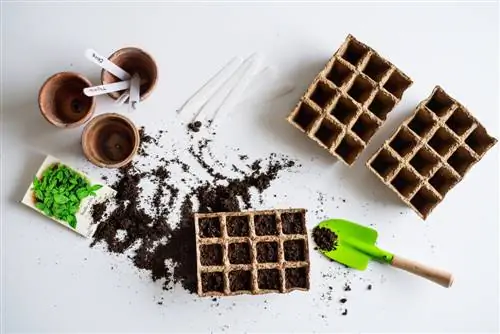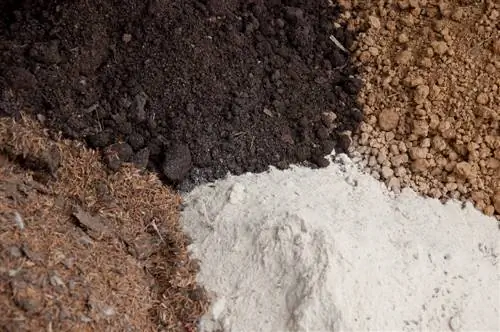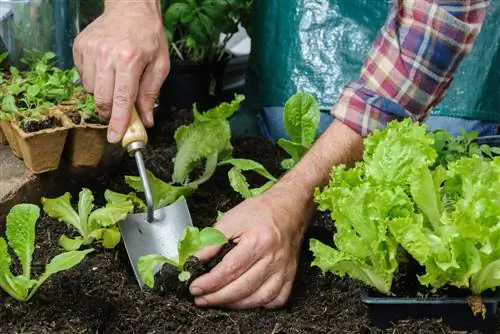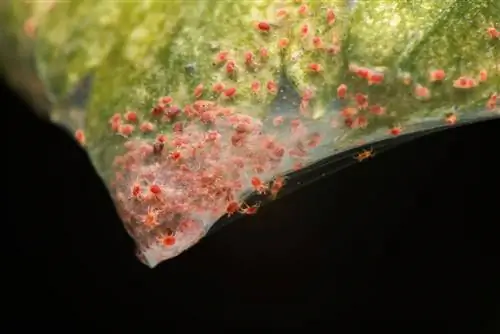- Author admin [email protected].
- Public 2024-01-05 20:48.
- Last modified 2025-06-01 06:02.
Soil in flower pots and vegetable beds permanently releases nutrients to the plants growing in it. The existing nutrients are therefore continuously depleted. To avoid undersupplying the plants, you can always replace the soil or prepare it.
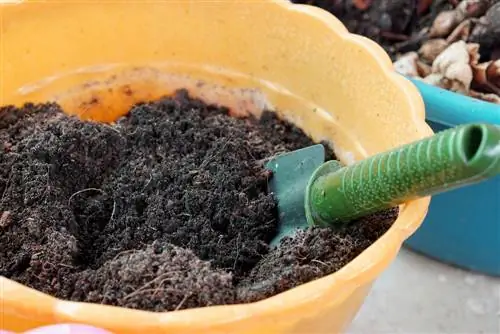
How can you prepare and care for potting soil?
To prepare potting soil, you should aerate the soil regularly, apply green manure, add compost and use good long-term fertilizers. This keeps the soil well ventilated and nutrient-rich for he althy plant growth.
Good Earth - Beautiful Flowers - Beautiful Vegetables
If you want to be successful in growing plants in the garden, on the balcony or on the terrace, the soil you use also matters. This should always be well ventilated, sufficiently watered and provided with nutrients.
The easy way to do this is to replace the potting soil every season. In the long run, this is an expensive undertaking. With little effort, the potting soil can be used permanently. The following rules should therefore be observed:
- aerate the soil well at regular intervals
- green manure if possible
- Add compost
- Use of good slow-release fertilizers
Aerating the Earth
Here it is advisable to regularly tackle the beds and also the flower pots with a cultivator or small pick (€55.00 on Amazon). With the appropriate tools it is easy to loosen up the hard soil and remove unwanted weeds. Mature compost is incorporated in the same operation. The soft material brings air into hard soil and nutrients at the same time. Mature compost also attracts worms, which naturally loosen the soil.
The green manure
Green manure is carried out using various materials. The first lawn cuttings, for example, can easily be applied to the land and also to potting soil. For larger areas, it is recommended to sow a foundation after the harvest. Alfalfa, clover or phacelia thrive in any garden soil, look pretty in autumn and can later be dug up as green manure.
Compost and slow-release fertilizer
Both materials return important nutrients to the earth. The compost can come from your own compost bin, well ripened and sifted. There is a wide range of long-term fertilizers available. If possible, you should use natural fertilizers such as wool fertilizer, horn meal or shavings and cleaned manure pellets.
If prepared well, the potting soil can be used over a longer period of time. However, one should be careful not to grow plants from the same botanical family in the same place every year. On the one hand, the soil leaches out on one side and, on the other hand, germs can settle that specialize in this family and prevent subsequent crops from thriving.
Information about Terra Preta, the Black Earth, has been compiled for you in this article.

